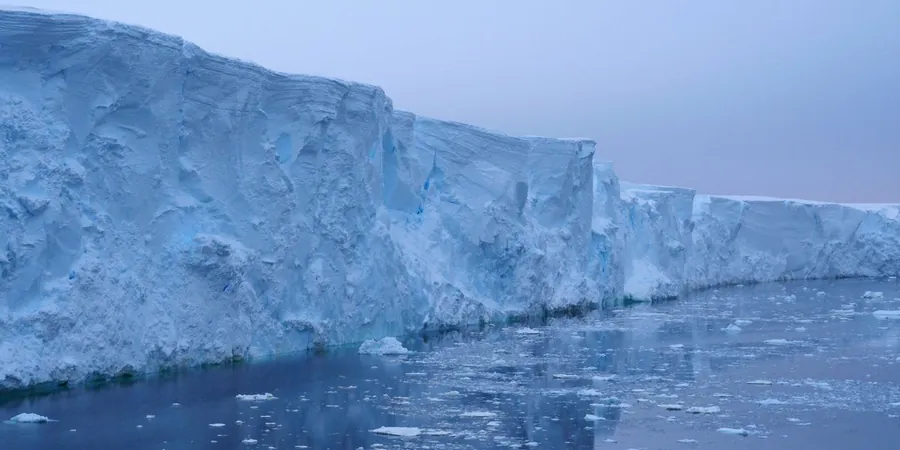
The 'Doomsday Glacier' Threatens Our Planet: What You Need to Know!
2024-09-23
Introduction
A recent scientific briefing has painted a dire picture for Thwaites Glacier in Antarctica, infamously dubbed the 'Doomsday Glacier.' This enormous ice mass, comparable in size to Great Britain or the state of Florida, is on the verge of collapse and poses catastrophic risks for global sea levels.
Sea Level Rise Risks
Thwaites Glacier is a crucial part of the West Antarctic Ice Sheet, and if it were to melt, it could substantially raise sea levels by as much as 65 centimeters (approximately 2.5 feet). While at first glance this might not seem alarming, consider this: nearly 44% of the world’s population lives within 150 kilometers of coastlines. Alarmingly, around 10% of people inhabit areas less than 10 meters above sea level, highlighting the vulnerability of billions to flooding if the glacier collapses.
International Collaboration
The International Thwaites Glacier Collaboration (ITGC), a joint project between US and UK scientists, is focused on understanding how quickly Thwaites will melt and how this will affect global sea levels. Their research is pivotal for low-lying regions, including coastal Bangladesh and Pacific island nations, as well as major cities like New York and London.
Research Insights
Dr. Rob Larter of the ITGC and a marine geophysicist at the British Antarctic Survey stated, "Thwaites has been retreating for more than 80 years, with significant acceleration noted over the past three decades. Projections suggest this retreat will continue to speed up, with a consensus that substantial changes will occur within the next century."
Emerging Concerns
Researchers are particularly worried about new processes identified in recent studies, which could cause the glacier to collapse even sooner than anticipated, although these factors are still being analyzed and not yet incorporated into large-scale predictive models.
Technological Advancements
Recent technological advancements, such as the use of underwater robots, have allowed scientists to gather more accurate data about this crucial glacier. The ITGC findings indicate that if current trends continue, Thwaites and a large portion of the West Antarctic Ice Sheet could potentially vanish by the 23rd century.
Warnings from Experts
Dr. Ted Scambos, US science coordinator of the ITGC and a glaciologist at the University of Colorado, cautioned, "The latest computer models predict ongoing ice loss that may accelerate throughout the 22nd century, ultimately contributing to a widespread collapse of the West Antarctic Ice Sheet by the 23rd century."
Call to Action
He emphasizes the critical need for "immediate and sustained climate intervention," which would have beneficial effects over time, especially in moderating the influx of warm deep ocean water, a principal driver of the glacier's retreat.
Global Implications
The stakes are high: if the entire West Antarctic Ice Sheet were to melt, global sea levels could rise by a staggering 3.3 meters (approximately 10.8 feet). This dramatic increase would drastically reshape coastlines and flood major urban areas around the globe.
Conclusion
As climate change continues to pose a formidable threat, experts insist that the international community must act urgently to address these challenges. It’s not just an environmental issue; it’s a matter of survival for millions. The clock is ticking, and our planet's fate hangs in the balance!


 Brasil (PT)
Brasil (PT)
 Canada (EN)
Canada (EN)
 Chile (ES)
Chile (ES)
 España (ES)
España (ES)
 France (FR)
France (FR)
 Hong Kong (EN)
Hong Kong (EN)
 Italia (IT)
Italia (IT)
 日本 (JA)
日本 (JA)
 Magyarország (HU)
Magyarország (HU)
 Norge (NO)
Norge (NO)
 Polska (PL)
Polska (PL)
 Schweiz (DE)
Schweiz (DE)
 Singapore (EN)
Singapore (EN)
 Sverige (SV)
Sverige (SV)
 Suomi (FI)
Suomi (FI)
 Türkiye (TR)
Türkiye (TR)